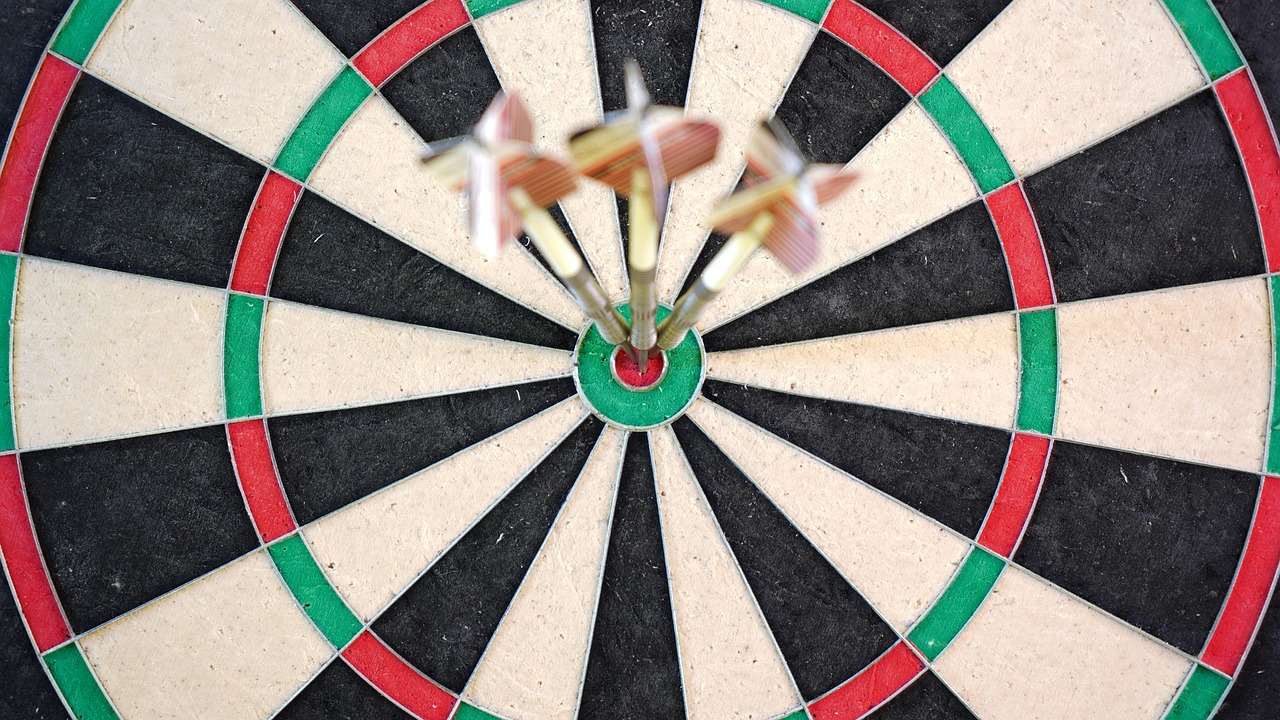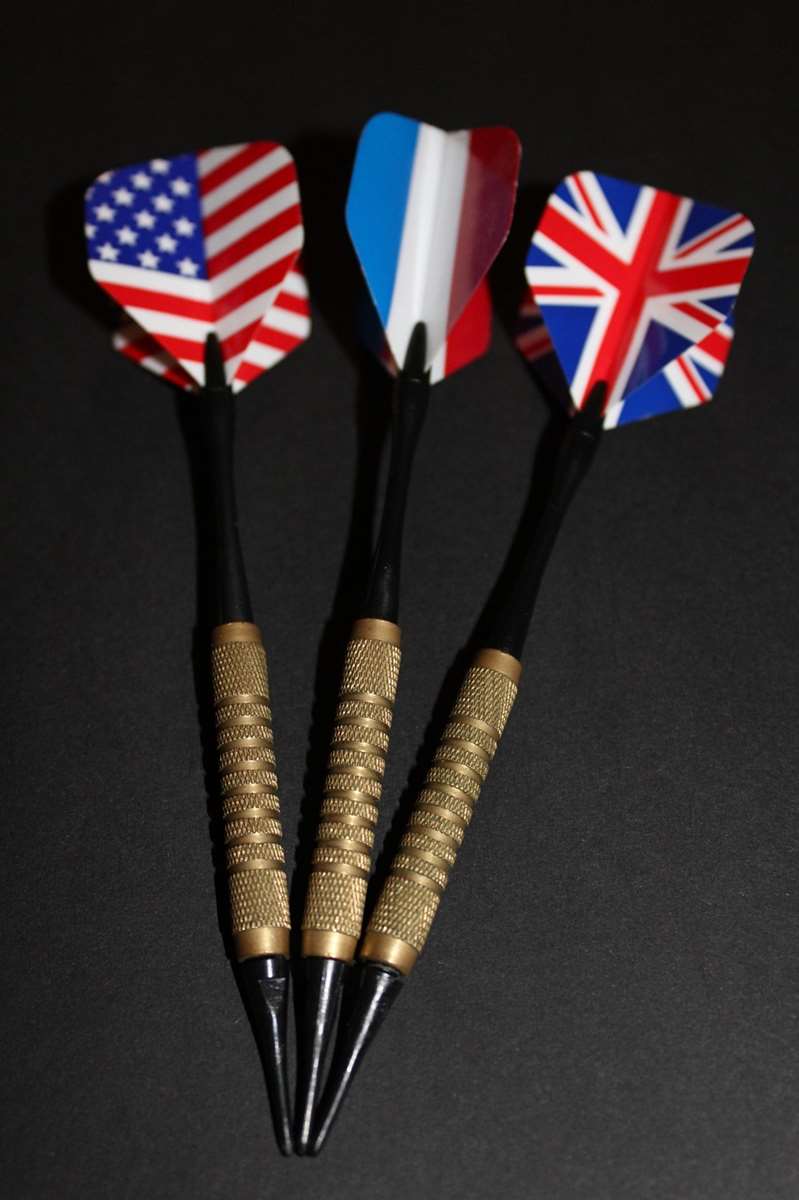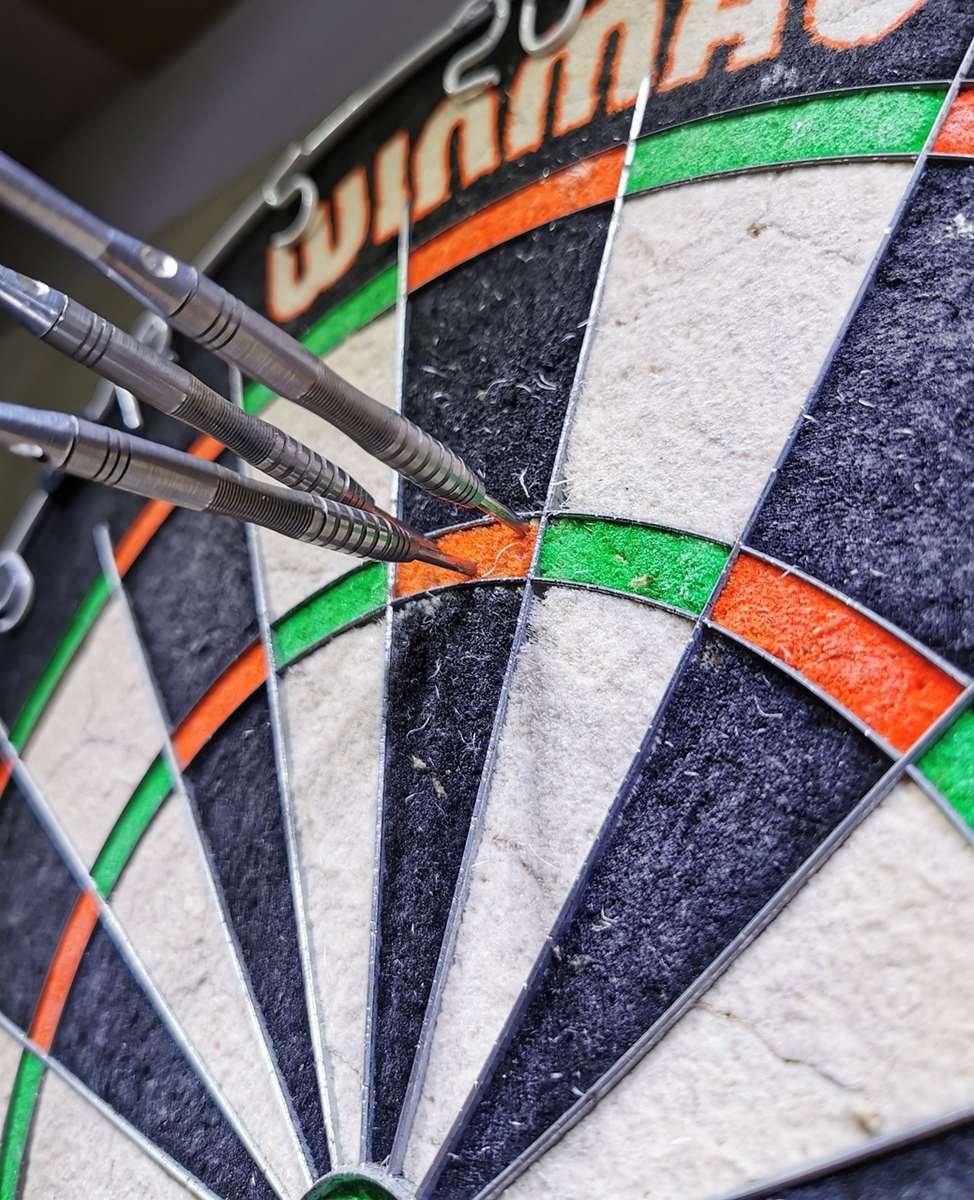The ideal **shaft for light darts** is one that complements the barrel’s weight and your throwing style, ensuring a balanced and stable flight path. This article explores the different types of dart shafts, materials, and lengths available, helping you select the perfect shaft to optimize your light dart setup for improved accuracy and scoring.
⚠️ Still Using Pen & Paper (or a Chalkboard)?! ⚠️
Step into the future! The Dart Counter App handles all the scoring, suggests checkouts, and tracks your stats automatically. It's easier than you think!
Try the Smart Dart Counter App FREE!Ready for an upgrade? Click above!
Understanding the Importance of the Shaft For Light Darts
While the barrel often gets the most attention, the shaft for light darts plays a crucial role in the overall dart performance. It acts as a bridge between the barrel and the flight, influencing the dart’s aerodynamics and stability in flight. Choosing the wrong shaft can lead to wobbling, fishtailing, and ultimately, missed targets. A properly chosen shaft, however, can significantly enhance your accuracy and consistency, especially when using lighter darts.

Consider the **shaft’s weight, length, and material** as these factors influence the centre of gravity and aerodynamic profile of your dart. Experimentation is key to finding the best combination for your individual throwing style and preferences. Adjustments as small as a few millimeters in shaft length can make a noticeable difference in flight characteristics.
Shaft Length and Its Impact on Dart Trajectory
The length of the shaft is a key factor in determining the dart’s trajectory. Generally speaking, a shorter shaft will shift the dart’s center of gravity forward, which can lead to a steeper angle of entry into the board. This can be beneficial for players who tend to throw with a higher arc. Conversely, a longer shaft moves the center of gravity towards the rear, promoting a flatter trajectory. This may be preferable for players who prefer a straighter, more direct throw. It’s also crucial to consider the Choose Best Dart Equipment.
Experimenting with different shaft lengths is a crucial step in optimizing your dart setup. Most players find that a medium length shaft offers a good balance, but those using **light darts** may benefit from exploring shorter or longer options to fine-tune their throw.
Materials Commonly Used in Dart Shafts
Dart shafts are manufactured from a variety of materials, each offering different properties in terms of weight, durability, and flexibility. The most common materials include:
- Aluminum: Aluminum shafts are lightweight and durable, offering good value for money. They are less prone to breaking than plastic shafts but can bend upon impact.
- Nylon/Plastic: Nylon or plastic shafts are the most affordable option. They are lightweight and offer a decent grip for the flight. However, they are the least durable and can break easily, particularly at the point where the flight is attached.
- Carbon Fiber: Carbon fiber shafts are the most durable and rigid option. They are lightweight and offer excellent flight stability. They are also the most expensive type of dart shaft.
- Rotating Shafts: These specialized shafts allow the flight to rotate freely upon impact, reducing deflections and improving scoring potential. They are often made from a combination of materials, such as nylon and aluminum.
When selecting a shaft material for your **light darts**, consider your budget, playing style, and desired level of durability. Many professional players prefer using carbon fiber shafts due to their exceptional performance and longevity.

Choosing the Right Weight Shaft For Light Darts
While **light darts** inherently require a lighter overall setup, the shaft weight should still be carefully considered. A shaft that is too light may cause the dart to feel unstable in flight, while a shaft that is too heavy can throw off the dart’s balance and reduce accuracy. The ideal weight will depend on the weight of your barrel and your personal preferences. A good starting point is to choose a shaft that weighs approximately the same as or slightly less than your flights.
Understanding the Importance of Grip
Some shafts come with textured surfaces or grooves to enhance grip. This can be particularly helpful for players who struggle with gripping the dart consistently. Experiment with different grip styles to find what feels most comfortable and secure for you. A consistent grip is crucial for achieving repeatable throws and improving your overall accuracy.
How to Maintain Your Dart Shafts
Proper maintenance can significantly extend the lifespan of your dart shafts and ensure consistent performance. Regularly inspect your shafts for signs of damage, such as bends, cracks, or loose threads. Replace damaged shafts immediately to avoid affecting your dart’s flight characteristics. Cleaning your shafts with a damp cloth can also help remove dirt and debris, improving grip and preventing corrosion. It might be useful to check Best Dartboard Lighting Systems.
Tightening Loose Shafts
If your shafts become loose, you can use a shaft tightening tool to secure them properly. These tools are inexpensive and readily available at most dart supply stores. Avoid overtightening the shafts, as this can damage the threads and shorten their lifespan.
Flight Compatibility With Your Shafts
It is crucial to ensure that your chosen flights are compatible with your dart shafts. Most shafts are designed to accommodate standard flights, but some may require specific flight types or adapters. Using incompatible flights can lead to poor flight stability and increased deflections. Carefully review the specifications of your shafts and flights before making a purchase to ensure compatibility.

Different flight shapes such as standard, kite, slim, or pear, will affect how the dart flies in conjunction with the shaft. Players often experiment with various flight shapes and shaft lengths to fine-tune the trajectory and stability. Finding the right pairing between flight shape and shaft length can reduce the wobble and correct dart drift.
Troubleshooting Common Dart Shaft Problems
Even with proper maintenance, you may encounter certain problems with your dart shafts. Some common issues include:
- Broken Shafts: Replace broken shafts immediately to avoid affecting your dart’s flight.
- Loose Shafts: Use a shaft tightening tool to secure loose shafts.
- Bent Shafts: Replace bent shafts, as they can affect your dart’s trajectory.
- Flights Falling Out: Ensure your flights are properly inserted into the shaft and use flight protectors to prevent them from falling out.
By addressing these common issues promptly, you can maintain the performance of your **light darts** and avoid frustrating interruptions during your game.
Experimenting to Find the Perfect Combination
The key to finding the perfect **shaft for light darts** is experimentation. There is no one-size-fits-all solution, as the ideal shaft will depend on your individual throwing style, grip, and preferences. Try different shaft lengths, materials, and weights to see what works best for you. Pay attention to how your darts fly and make adjustments accordingly. It might be helpful to invest in a variety of shafts to test different configurations.

Keep a log of your experiments, noting which shafts and flights you tested and the results you observed. This will help you identify patterns and narrow down your search for the perfect combination. Consider filming your throws so you can objectively analyze your dart’s trajectory. If you’re struggling, consulting with experienced dart players or a dart technician can provide valuable insights and guidance. This will help with the Optimal Dartboard Lighting Solutions Guide.
Advanced Dart Shaft Features and Technologies
In addition to the basic features, some dart shafts incorporate advanced technologies to enhance performance. These include:
- Spinning Shafts: Allow the flight to rotate freely, reducing deflections.
- Spring-Loaded Shafts: Absorb impact and reduce bounce-outs.
- Adjustable Shafts: Allow you to adjust the shaft length for fine-tuning your dart’s trajectory.
While these advanced features can be beneficial, they are not essential for all players. Consider your individual needs and preferences before investing in these technologies.
The Role of Shafts in Dart Aerodynamics
The dart shaft contributes to the overall aerodynamics of the dart, impacting its flight path and stability. A properly selected shaft aligns with the barrel and flight to create a streamlined profile that minimizes drag. This streamlined profile results in a smoother and more predictable flight, improving accuracy and consistency.

Conversely, an ill-fitting shaft can disrupt the airflow around the dart, leading to increased drag, wobble, and deflections. By paying close attention to the shaft’s design and its interaction with the barrel and flight, you can optimize your dart’s aerodynamics for improved performance. Also, do not forget to check the How To Light Your Dartboard.
Final Thoughts on Selecting a Shaft For Light Darts
Choosing the right **shaft for light darts** is an iterative process that requires experimentation and attention to detail. By understanding the different types of shafts, materials, and lengths available, you can make informed decisions and optimize your dart setup for improved accuracy and scoring. Remember to consider your individual throwing style, grip, and preferences when selecting a shaft. Don’t be afraid to try different combinations until you find what works best for you. Regularly inspect and maintain your shafts to ensure consistent performance. Consider the LED Dartboard Lights Benefits for enhancing your playing experience. With the right shaft, you can take your dart game to the next level.
Take the time to experiment with different shafts and flights to find the perfect combination for your throwing style. Upgrade your dart setup today and start hitting those bullseyes with greater consistency!
Hi, I’m Dieter, and I created Dartcounter (Dartcounterapp.com). My motivation wasn’t being a darts expert – quite the opposite! When I first started playing, I loved the game but found keeping accurate scores and tracking stats difficult and distracting.
I figured I couldn’t be the only one struggling with this. So, I decided to build a solution: an easy-to-use application that everyone, no matter their experience level, could use to manage scoring effortlessly.
My goal for Dartcounter was simple: let the app handle the numbers – the scoring, the averages, the stats, even checkout suggestions – so players could focus purely on their throw and enjoying the game. It began as a way to solve my own beginner’s problem, and I’m thrilled it has grown into a helpful tool for the wider darts community.